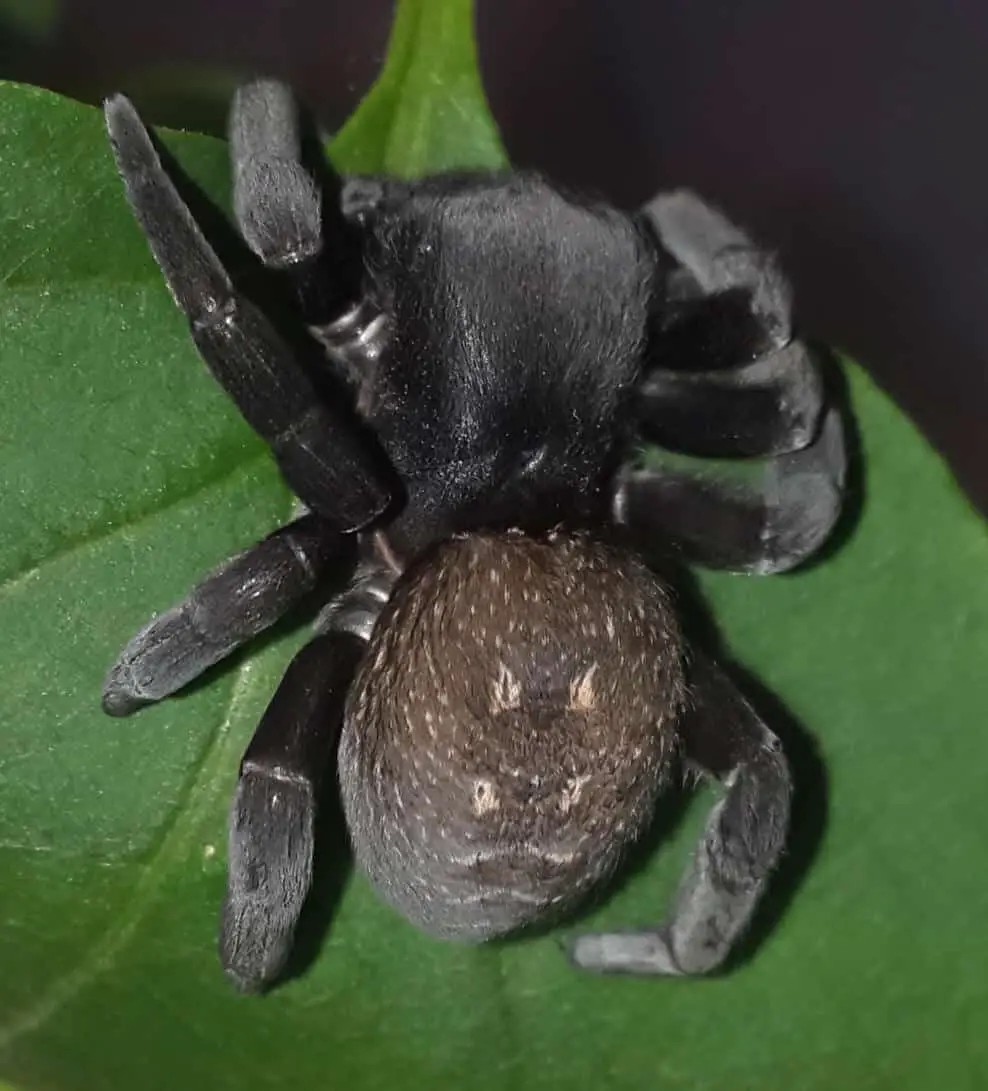Ladybird spiders belong to the Eresus species which is a genus of velvet spiders comprising several species, including Eresus cinnaberinus (formerly E. niger) and Eresus sandaliatus, both of which are sometimes known as the “Ladybird spider”. They are mostly found in Eastern and Northern Europe (Info: Wikipedia)
Eresus cinnaberinus (formerly Eresus niger) is native to Europe. The taxon “Eresus cinnaberinus” is considered a nomen dubium, the specimens having been divided into the species E. kollari, E. sandaliatus and E. moravicus. The three species differ in size, color pattern, shape of prosoma and copulatory organs, and habitat, with no morphologically intermediate forms. As eastern and western E. kollari are genetically different, with the eastern form likely a hybrid between “pure” E. kollari and E. moravicus, it is possible that later revisions will partition it into additional species.
Males are up to 11 mm long, females can reach up to 20 millimetres (0.79 in). Males have a black prosoma and a strikingly red opisthosoma with four black dots (sometimes with white lining), resembling a ladybug (or ladybird). The black legs have white stripes, the hind legs are partly red. Females are black with some white hairs, only the front is sometimes yellow. This species can be found only in a “secret” half-acre patch of south-facing Dorset heathland in England. It prefers sunny, dry locations and is widely distributed in Central and Southern Europe.
These spiders live in up to 10 centimetres (3.9 in) long underground tubes with a diameter of about one centimetre. On top they are much wider and lined with cribellate silk. Many webs can usually be found in the same place, sometimes up to ten on a single square meter. E. cinnaberinus mainly catches millipedes and beetles. Males walk around during September, searching for females. If it finds one, it lives with the female in her tube, and they feed from the same web.
All photos are copyright to their owners and may not be reproduced without permission.















